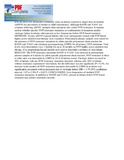| dc.contributor.author | Lehman, DA | |
| dc.contributor.author | Wamalwa, DC | |
| dc.contributor.author | McCoy, CO | |
| dc.contributor.author | Matsen, FA | |
| dc.contributor.author | Langat, A | |
| dc.contributor.author | Chohan, BH | |
| dc.contributor.author | Benki-Nugent, S | |
| dc.contributor.author | Custers-Allen, R | |
| dc.contributor.author | Bushman, FD | |
| dc.contributor.author | John-Stewart, GC | |
| dc.contributor.author | Overbaugh, J | |
| dc.date.accessioned | 2013-06-24T13:39:13Z | |
| dc.date.available | 2013-06-24T13:39:13Z | |
| dc.date.issued | 2012-07 | |
| dc.identifier.citation | J Acquir Immune Defic Syndr. 2012 Jul 1;60(3):225-33 | en |
| dc.identifier.uri | http://www.ncbi.nlm.nih.gov/pubmed/22395670 | |
| dc.identifier.uri | http://erepository.uonbi.ac.ke:8080/xmlui/handle/123456789/39099 | |
| dc.identifier.uri | http://www.ncbi.nlm.nih.gov/pmc/articles/PMC3383885/ | |
| dc.description.abstract | BACKGROUND:
Resistance commonly arises in infants exposed to single-dose nevirapine (sdNVP) for prevention of mother to child transmission. Although K103N and Y181C are common following sdNVP, multiple other mutations also confer NVP resistance. It remains unclear whether specific NVP resistance mutations or combinations of mutations predict virologic failure in infants when present at low frequencies before NVP-based treatment.
METHODS:
Twenty sdNVP-exposed infants who were subsequently treated with NVP-based highly active antiretroviral therapy were examined. Pretreatment plasma samples were tested for the presence of NVP resistance mutations by allele-specific polymerase chain reaction for K103N and Y181C and ultradeep pyrosequencing (UDPS) for all primary NVP mutations. Viral levels were determined every 3 months for up to 24 months on NVP-highly active antiretroviral therapy. Cox proportional hazard models were used to determine correlates of viral failure.
RESULTS:
The NVP resistance mutations K103N or Y181C were detected in pretreatment plasma samples in 6 infants by allele-specific polymerase chain reaction. NVP resistance at these or other sites was detectable by UDPS in 10 of 20 infants tested. Virologic failure occurred in 50% of infants with any NVP resistance mutations detected, whereas only 20% of infants without resistance experienced viral failure, but the difference was not significant (P = 0.19). An increase in the number of NVP resistance mutations detectable by UDPS in an infant was significantly associated with an increased risk of virologic failure [HR = 1.79 (95% confidence interval: 1.07 to 2.99), P = 0.027].
CONCLUSIONS:
Low frequencies of multiple NVP resistance mutations, in addition to K103N and Y181C, present in infants before NVP-based treatment may predict treatment outcome. | en |
| dc.language.iso | en | en |
| dc.publisher | University of Nairobi. | en |
| dc.title | Low-frequency nevirapine resistance at multiple sites may predict treatment failure in infants on nevirapine-based treatment. | en |
| dc.type | Article | en |
| local.publisher | Department of Paediatrics | en |

